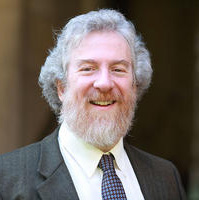Keva–Kavanah (Liturgy–Prayer)

My teacher in London, Rabbi Dr. Jonathan Magonet, wrote a fascinating and inspiring poem-meditation exploring the concepts of prayer and liturgy, which I would associate with the traditional rabbinic terms keva and kavanah (the connection is not 100 percent perfect). Our synagogues are often in fact places of liturgy, where prescribed rites and rituals are carried out, with the gathered congregation participating and/or witnessing. Many among us yearn and dream for synagogues to be places of something else, something more transcendent. Let us turn to selections from Rabbi Magonet’s words:
Liturgy defines the Community that prays
Prayer is the offering of each individual
Liturgy affirms the values of that Community
Prayer sets those values on our lips and in our hearts
Liturgy unites those who share a tradition
Prayer connects us to all who pray
Liturgy describes the boundaries of a community
Prayer locates us within creation as a whole
Liturgy offers a language for our prayer
Prayer reaches out beyond language
Liturgy invites our emotions
Prayer refines our emotions
Liturgy begins with the world we know
Prayer suggests worlds to be explored
Liturgy seeks to bring God into the world
Prayer helps make room for God in our lives
Liturgy provides security, continuity and certainty
Prayer disturbs, challenges and confronts
Liturgy is an event. Prayer is a risk.
(Read the full text of this poem)
Rabbis and cantors are carefully trained to understand the manifold aspects of liturgy, and to render the liturgy correctly, and with beauty. We often respond to that beauty, and we find ourselves connected to the forms and structures that are provided by the fixed liturgy. And yet we know that our hearts and souls often seek something more, something more private and intimate, transcendent and personal. Our Sages of old, and the rabbis and cantors of modernity, are deeply aware of the limitations of structured liturgy; among the students of JTS, too, the quest for personal prayer, for personal meaning, goes very deep.
We affirm that for some this meaning or experience can be found by probing deeply the meaning of prayer texts (iyyun tefillah), but that for others the experience of prayer is born of silence, or inspiring music, or insightful teaching and poetry. Rabbi Magonet invites us to embrace both horns of the dilemma: let us attend the fixed services as an event, but let us know, as well, that there is an inevitable risk of being challenged or even disturbed. We yearn for kavanah, for personal connection to the Divine; we read in the Talmud (Sanhedrin 106b) that this yearning is reciprocated:
“Rachaman liba ba’ei—The All-Merciful desires the (human) heart!”
As always, I am interested to hear comments and reflections on these thoughts about prayer and liturgy. You may reach me at sabarth@jtsa.edu.



